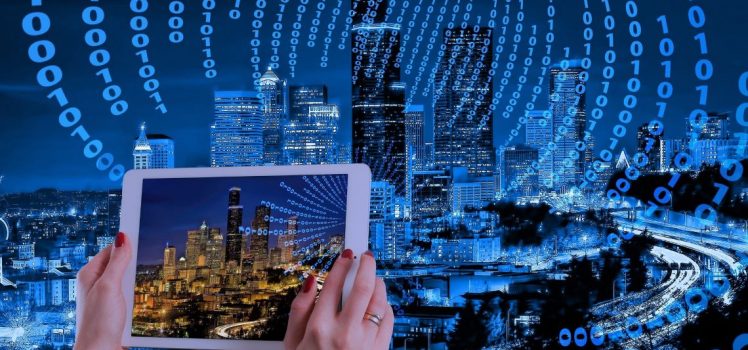Cities are experiencing profound changes – intelligent buildings form the backbone of smart cities

In recent years, we have gradually witnessed major changes in our societies worldwide. Determining factors are, for example, digitization, global warming or the changing demography including the aging population in many countries or migration effects. The current pandemic has just accelerated these transitions with a domino effect that forces us to analyze and act quickly. A holistic approach is necessary to overcame these challenges.
Cities must adapt to changes in human activities and respond to climate challenges
Over the last 150 years cities have develop rapidly. Today, they are responsible for 70% greenhouse gas emissions. It is obvious that cities cannot develop further as they have in the past. We considered for too long that fossil energy resources were inexhaustible. Hybrid buildings, smart cities and intelligent infrastructures are an answer to this shift I call ‘civilizational change’.
As an example, it is no longer justified to use buildings only 30% of their time or vehicles less than 5% of their time! We must move towards a more sustainable and more local society, optimizing all resources. This includes in my opinion hybrid buildings, hybrid mobility, hybrid networks and hybrid cities.
Energy is crucial and requires digital network management
In this context, energy is crucial. Therefore, we need to rethink our system of energy use. I think the city of tomorrow – that we are building today – will be fully electric and primarily carbon-free. That means we have to provide favorable conditions for this transition now.
We need to integrate the deployment of electrical vehicles which, according to Deloitte, will represent 32% of the vehicle fleet by 2030. We also need to integrate the local production of renewable energies and their storage capacity. This will represent a major challenge to electrical networks that were not calibrated to withstand such a load increase.
Therefore, it is essential to reduce our energy consumption globally. One way to achieve this is to optimize the usage of resources and to implement energy savings measures in every building. Today, buildings are responsible for about 40 percent of electricity consumption.
Hybrid electrical networks which produce and store energy locally are part of the solution. This approach is called micro-grids. Since mobility, renewable energies and energy storage are natively in DC (Direct Current) it makes sense to move towards DC-Microgrids that will power urban mobility, urban lighting and partially power buildings.
Digital Twin – a prerequisite to support this change
In this context, digitization plays a key part to support the monitoring of multiple energy sources. For example, if in the same building, a major part of residents wants simultaneously to recharge their vehicle, start their household appliances (dryer, washing machine, TV, …) there will be an issue regarding the available power. This problem might also be the same at district level, for example. Therefore, it becomes now urgent to deploy demand response solutions at the level of every building and territory in order to adjust automatically the electricity demand to the network’s capacity.
The first prerequisite for this is that all equipment, every building and every vehicle can be monitored remotely in real time. This requires that every building has a digital infrastructure with the ability to remotely control all equipment in real time by relying on open data and interoperable systems. Access to data must be secure and controlled locally. Each building needs to be equipped with a Building Operating System (BOS), ensuring a safe collection and storage of the data and enabling applications to deliver services such energy management.
While 120 years ago cities were electrified, it is now just as important to deploy this digital infrastructure on a massive scale in a controlled and secure manner.
It is also important to manage data at a local level (building, residence, district) and to put in place appropriate governance that meets the challenges of cybersecurity and protection of personal data.
Buildings become, in this context, real service platforms that will directly impact their value. A building will be an integral part of a neighborhood for shared services. The Digital Twin is then positioned as the essential tool for aggregating the data at the level of buildings as well as districts and allows the deployment of multiple services, among them energy management.
Cities need to be rethought
Cities have always been a reflection of a society and the rapid changes that we are currently experiencing show us that we have to manage this transformation quickly. We must rethink buildings and cities to ensure proximity, diversity and sustainability. This is the worksite for the next 20 years to gain a happy future for all.


